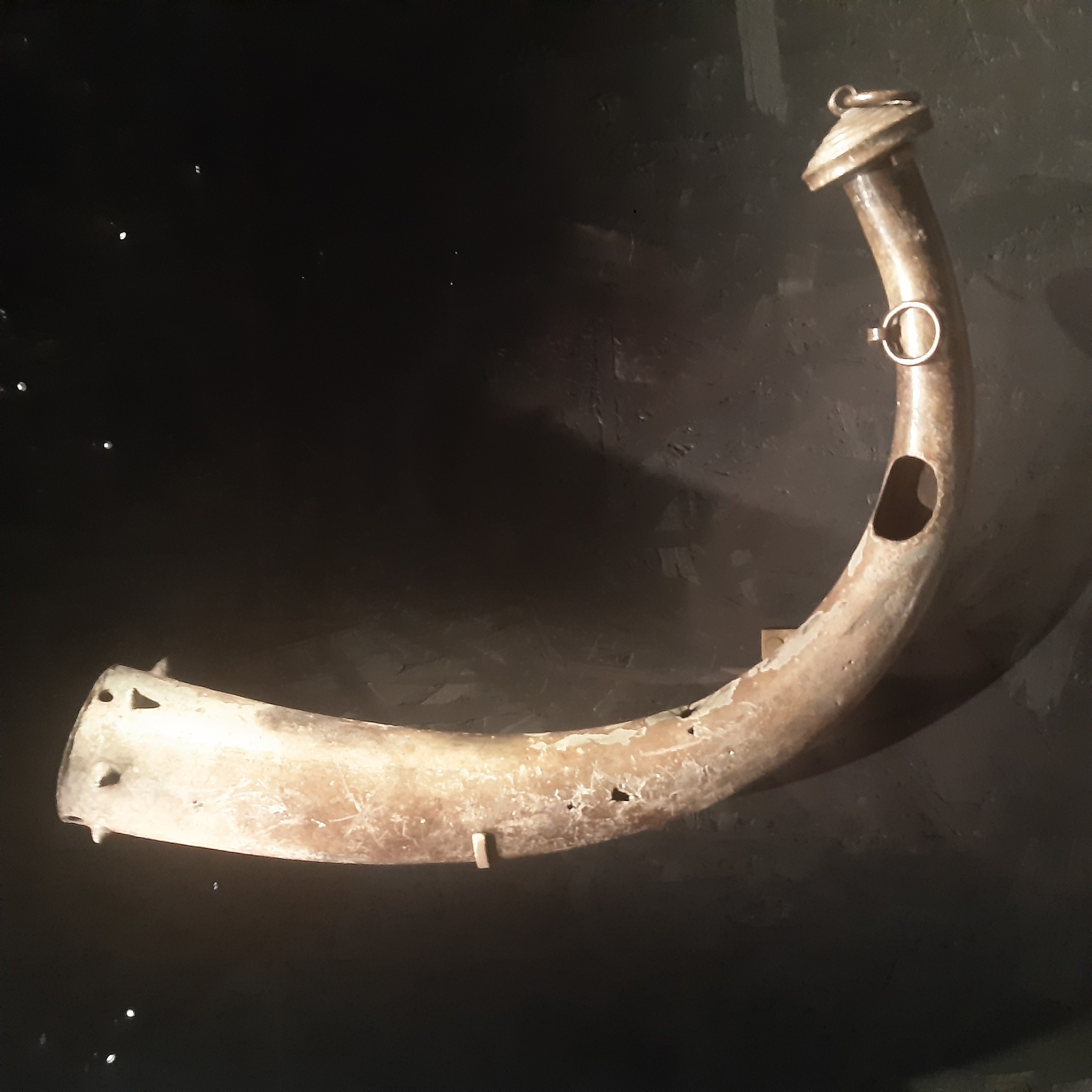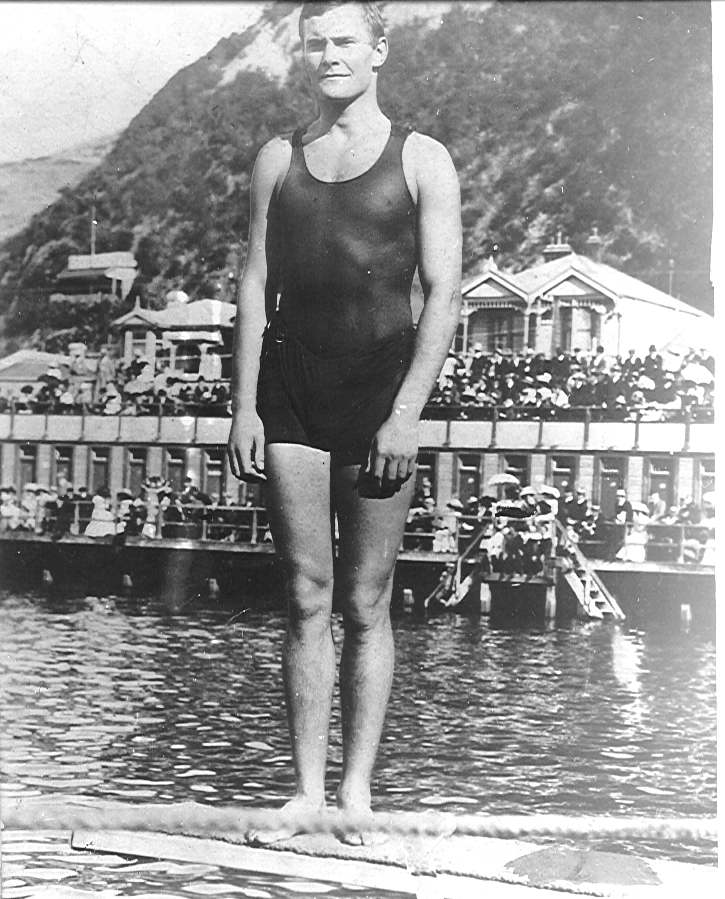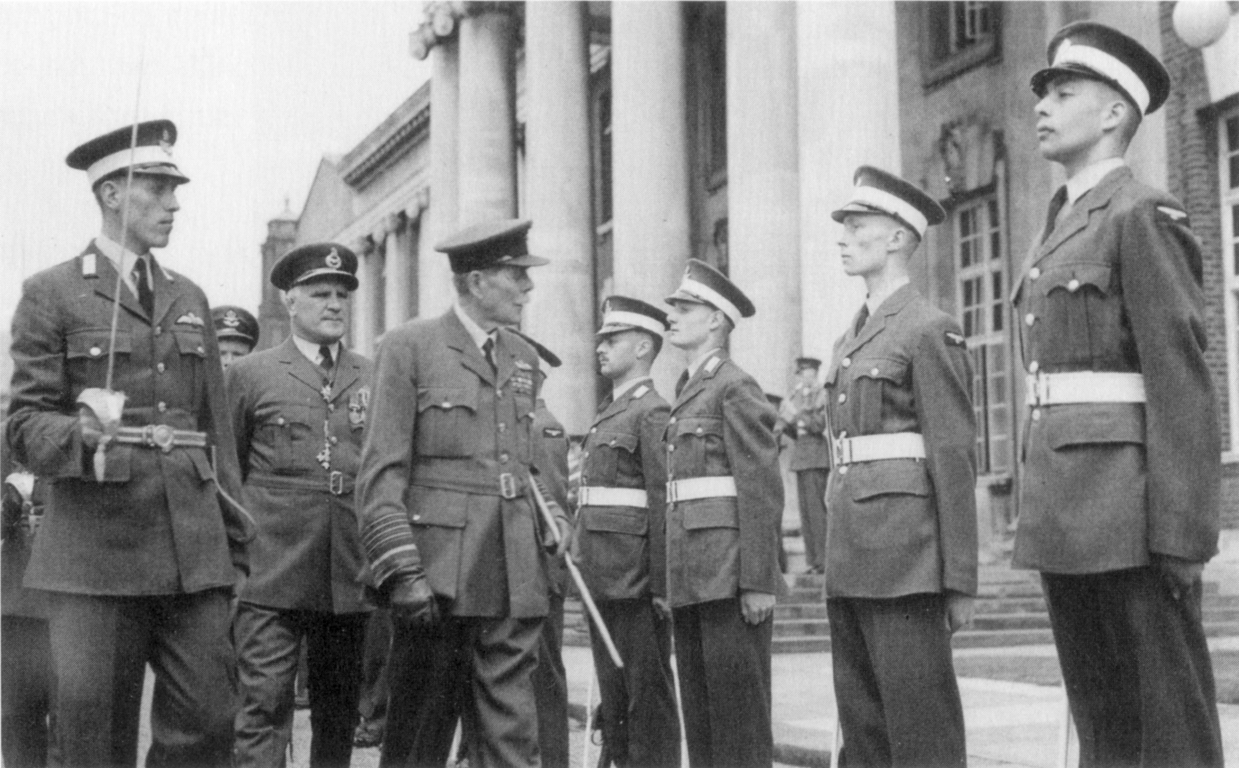|
George Beamish
Air Marshal Sir George Robert Beamish, (29 April 1905 – 13 November 1967) was a senior commander in the Royal Air Force from the Second World War to his retirement in the late 1950s. Prior to the Second World War, while Beamish was in the RAF, he was a keen rugby union player, playing for Leicester and being capped 26 times for Ireland and was selected for the 1930 British Lions tour. He was also the chairman of the RAF Rugby Union and an Air Force rugby selector. Personal history George Beamish was born in Dunmanway, Ireland on 29 April 1905. He attended the Coleraine Academical Institution and he and his three younger brothers, Victor, Charles and Cecil were all accomplished sportsmen and went on to join the RAF, Charles also being capped by Ireland. From 1923 Beamish attended the RAF College, Cranwell as a flight cadet and after he was commissioned in late 1924, Beamish was posted as a pilot on No. 100 Squadron. In 1934 he was made Flight Commander of No. 45 Squad ... [...More Info...] [...Related Items...] OR: [Wikipedia] [Google] [Baidu] |
Dunmanway
Dunmanway (, official Irish name: ) is a market town in County Cork, in the southwest of Ireland. It is the geographical centre of the region known as West Cork. It is the birthplace of Sam Maguire, an Irish Protestant republican, for whom the trophy of the All-Ireland Senior Football Championship is named. There is disagreement over the meaning and origin of the town's name. Various sources list its meaning when translated from Irish as "the castle of the yellow river," "the castle on the little plain," "the fort of the gables (or pinnacles)," and "the fort of the yellow women." The town centre is built on and around two rivers, which are tributaries of the larger River Bandon, which passes by at the east end of the town. The town is twinned with Quéven, France. Dunmanway won the Irish Tidy Towns Competition in 1982. More recently, the town came to national and international attention thanks to a visit by Liverpool Football Club for a pre-season soccer friendly. The pop ... [...More Info...] [...Related Items...] OR: [Wikipedia] [Google] [Baidu] |
Knight Commander Of The Order Of The Bath
The Most Honourable Order of the Bath is a British order of chivalry founded by George I on 18 May 1725. The name derives from the elaborate medieval ceremony for appointing a knight, which involved bathing (as a symbol of purification) as one of its elements. The knights so created were known as "Knights of the Bath". George I "erected the Knights of the Bath into a regular Military Order". He did not (as is commonly believed) revive the Order of the Bath, since it had never previously existed as an Order, in the sense of a body of knights who were governed by a set of statutes and whose numbers were replenished when vacancies occurred. The Order consists of the Sovereign (currently King Charles III), the Great Master (currently vacant) and three Classes of members: *Knight Grand Cross ( GCB) ''or'' Dame Grand Cross ( GCB) *Knight Commander ( KCB) ''or'' Dame Commander ( DCB) *Companion ( CB) Members belong to either the Civil or the Military Division.''Statutes'' 1925, artic ... [...More Info...] [...Related Items...] OR: [Wikipedia] [Google] [Baidu] |
Short Sunderland
The Short S.25 Sunderland is a British flying boat patrol bomber, developed and constructed by Short Brothers for the Royal Air Force (RAF). The aircraft took its service name from the town (latterly, city) and port of Sunderland in North East England. Developed in parallel with the civilian S.23 ''Empire'' flying boat, the flagship of Imperial Airways, the Sunderland was developed specifically to conform to the requirements of British Air Ministry Specification R.2/33 for a long-range patrol/reconnaissance flying boat to serve with the Royal Air Force (RAF). As designed, it served as a successor to the earlier Short Sarafand flying boat. Sharing several similarities with the S.23, it featured a more advanced aerodynamic hull and was outfitted with various offensive and defensive armaments, including machine gun turrets, bombs, aerial mines, and depth charges. The Sunderland was powered by four Bristol Pegasus XVIII radial engines and was outfitted with various detection equi ... [...More Info...] [...Related Items...] OR: [Wikipedia] [Google] [Baidu] |
Bernard Freyberg, 1st Baron Freyberg
Lieutenant-general (United Kingdom), Lieutenant-General Bernard Cyril Freyberg, 1st Baron Freyberg, (21 March 1889 – 4 July 1963) was a British-born New Zealand soldier and Victoria Cross recipient, who served as the List of Governors-General of New Zealand, 7th Governor-General of New Zealand from 1946 to 1952. Freyberg served as an officer in the British Army during the First World War. He took part in the beach landings during the Gallipoli Campaign and was the youngest general in the British Army during the First World War, later serving on the Western Front (World War I), Western Front, where he was decorated with the Victoria Cross and three Distinguished Service Orders, making him one of the most highly decorated British Empire soldiers of the First World War. He liked to be in the thick of the action: Winston Churchill called him "the Salamander" due to his ability to pass through fire unharmed. During the Second World War, he commanded the New Zealand Expeditionary F ... [...More Info...] [...Related Items...] OR: [Wikipedia] [Google] [Baidu] |
Battle Of Crete
The Battle of Crete (german: Luftlandeschlacht um Kreta, el, Μάχη της Κρήτης), codenamed Operation Mercury (german: Unternehmen Merkur), was a major Axis airborne and amphibious operation during World War II to capture the island of Crete. It began on the morning of 20 May 1941, with a multiple German airborne landings on Crete. Greek and other Allied forces, along with Cretan civilians, defended the island. After only one day of fighting, the Germans had suffered heavy casualties and the Allied troops were confident that they would defeat the invasion. The next day, through communication failures, Allied tactical hesitation, and German offensive operations, Maleme Airfield in western Crete fell, enabling the Germans to land reinforcements and overwhelm the defensive positions on the north of the island. Allied forces withdrew to the south coast. More than half were evacuated by the British Royal Navy and the remainder surrendered or joined the Cretan resistan ... [...More Info...] [...Related Items...] OR: [Wikipedia] [Google] [Baidu] |
Crete
Crete ( el, Κρήτη, translit=, Modern: , Ancient: ) is the largest and most populous of the Greek islands, the 88th largest island in the world and the fifth largest island in the Mediterranean Sea, after Sicily, Sardinia, Cyprus, and Corsica. Crete rests about south of the Greek mainland, and about southwest of Anatolia. Crete has an area of and a coastline of 1,046 km (650 mi). It bounds the southern border of the Aegean Sea, with the Sea of Crete (or North Cretan Sea) to the north and the Libyan Sea (or South Cretan Sea) to the south. Crete and a number of islands and islets that surround it constitute the Region of Crete ( el, Περιφέρεια Κρήτης, links=no), which is the southernmost of the 13 top-level administrative units of Greece, and the fifth most populous of Greece's regions. Its capital and largest city is Heraklion, on the north shore of the island. , the region had a population of 636,504. The Dodecanese are located ... [...More Info...] [...Related Items...] OR: [Wikipedia] [Google] [Baidu] |
RAF College, Cranwell
The Royal Air Force College (RAFC) is the Royal Air Force military academy which provides initial training to all RAF personnel who are preparing to become commissioned officers. The College also provides initial training to aircrew cadets and is responsible for all RAF recruiting along with officer and aircrew selection. Originally established as a naval aviation training centre during World War I, the College was established as the world's first air academy in 1919. During World War II, the College was closed and its facilities were used as a flying training school. Reopening after the War, the College absorbed the Royal Air Force Technical College in 1966. The Royal Air Force College is based at RAF Cranwell near Sleaford in Lincolnshire, and is sometimes titled as the Royal Air Force College Cranwell. History Early years In December 1915, after the Royal Naval Air Service had broken away from the Royal Flying Corps, Commodore Godfrey Paine was sent to Cranwell to start a ... [...More Info...] [...Related Items...] OR: [Wikipedia] [Google] [Baidu] |
Cecil Beamish
Air Vice Marshal Cecil Howard Beamish CB FDSRCS (31 March 1915 – 21 May 1999) was an Irish RAF officer, who served during the Second World War and was later Director of RAF Dental Services 1969–1973. He was the youngest of the Beamish brothers, the others being Victor, George and Charles, all RAF officers and accomplished sportsmen. Beamish played rugby for London Irish, the Barbarians and the RAF. He was an accomplished amateur golfer, who represented Ireland internationally; he was runner-up in the Irish Amateur Open Championship in 1952 and a semi-finalist in The Amateur Championship The Amateur Championship (sometimes referred to as the British Amateur or British Amateur Championship outside the UK) is a golf tournament which has been held annually in the United Kingdom since 1885 except during the two World Wars, and in 19 ... in 1953. References {{DEFAULTSORT:Beamish, Cecil Howard 1915 births 1999 deaths Irish rugby union players Barbarian F.C. players ... [...More Info...] [...Related Items...] OR: [Wikipedia] [Google] [Baidu] |
Charles Beamish
Group Captain Charles Eric St John Beamish (23 June 1908 – 18 May 1984) was an Irish rugby player and Second World War RAF pilot. He gained 12 caps for Ireland as a prop forward and also represented the British Isles on their 1936 tour of Argentina. He was one of the Beamish brothers - elder brother George also played for Ireland, and other brothers Victor and Cecil were also accomplished sportsmen and RAF officers. Rugby career Beamish played his first international match for Ireland in the encounter against Wales in the 1933 Home Nations Championship. At the time Beamish was playing at club level for North of Ireland F.C., and when he joined the Ireland squad he came in at prop, with his elder brother George at No 8. and team captain.Godwin (1984) p.194 Ireland won the game 10-5, and Beamish was reselected for the final match of the tournament against Scotland in April. By this time Beamish was no longer recorded as playing for North of Ireland, and had switched clubs to ... [...More Info...] [...Related Items...] OR: [Wikipedia] [Google] [Baidu] |
Victor Beamish
Group Captain Francis Victor Beamish, (27 September 1903 – 28 March 1942) was a Royal Air Force fighter pilot and flying ace of the Second World War. After flying during the Battle of Britain he continued to lead fighter operations until he was killed in action in 1942. Early life Beamish was born at Dunmanway, County Cork on 27 September 1903 the son of Francis George Beamish and Mary Elizabeth Beamish. He attended Coleraine Academical Institution.Shores (1994), p.119 Royal Air Force career Beamish entered the RAF College, Cranwell as a flight cadet on 14 September 1921. After graduation in August 1923 he was granted a permanent commission as pilot officer on 15 August 1923, and posted to 4 (Army Co-operation) Squadron at RAF Farnborough on 18 September 1923. In January 1925 Beamish was posted to the RAF School of Army Co-operation at Old Sarum for a brief posting before being promoted flying officer on 15 February 1925, joining No. 31 Squadron RAF at Ambala, India on 18 ... [...More Info...] [...Related Items...] OR: [Wikipedia] [Google] [Baidu] |
Rugby Union
Rugby union, commonly known simply as rugby, is a Contact sport#Terminology, close-contact team sport that originated at Rugby School in the first half of the 19th century. One of the Comparison of rugby league and rugby union, two codes of rugby football, it is based on running with the ball in hand. In its most common form, a game is played between two teams of 15 players each, using an Rugby ball, oval-shaped ball on a rectangular field called a pitch. The field has H-shaped Goal (sports)#Structure, goalposts at both ends. Rugby union is a popular sport around the world, played by people of all genders, ages and sizes. In 2014, there were more than 6 million people playing worldwide, of whom 2.36 million were registered players. World Rugby, previously called the International Rugby Football Board (IRFB) and the International Rugby Board (IRB), has been the governing body for rugby union since 1886, and currently has 101 countries as full members and 18 associate ... [...More Info...] [...Related Items...] OR: [Wikipedia] [Google] [Baidu] |
Legion Of Merit
The Legion of Merit (LOM) is a military award of the United States Armed Forces that is given for exceptionally meritorious conduct in the performance of outstanding services and achievements. The decoration is issued to members of the eight uniformed services of the United States Note: National Oceanic and Atmospheric Administration Commissioned Officer Corps Amendments Act of 2012 amended the Legion of Merit to be awarded to any uniformed service. as well as to military and political figures of foreign governments. The Legion of Merit (Commander degree) is one of only two United States military decorations to be issued as a neck order (the other being the |







